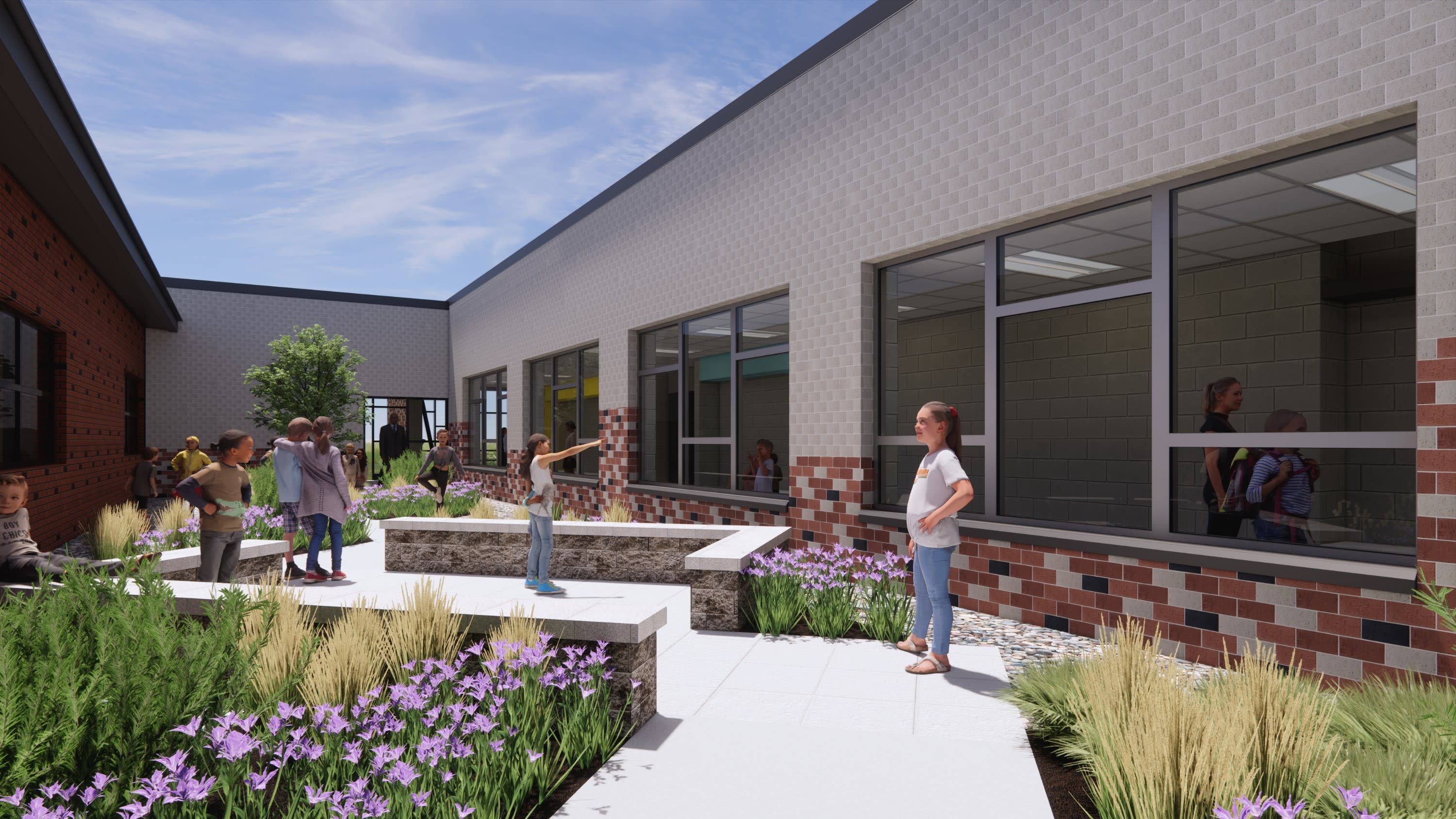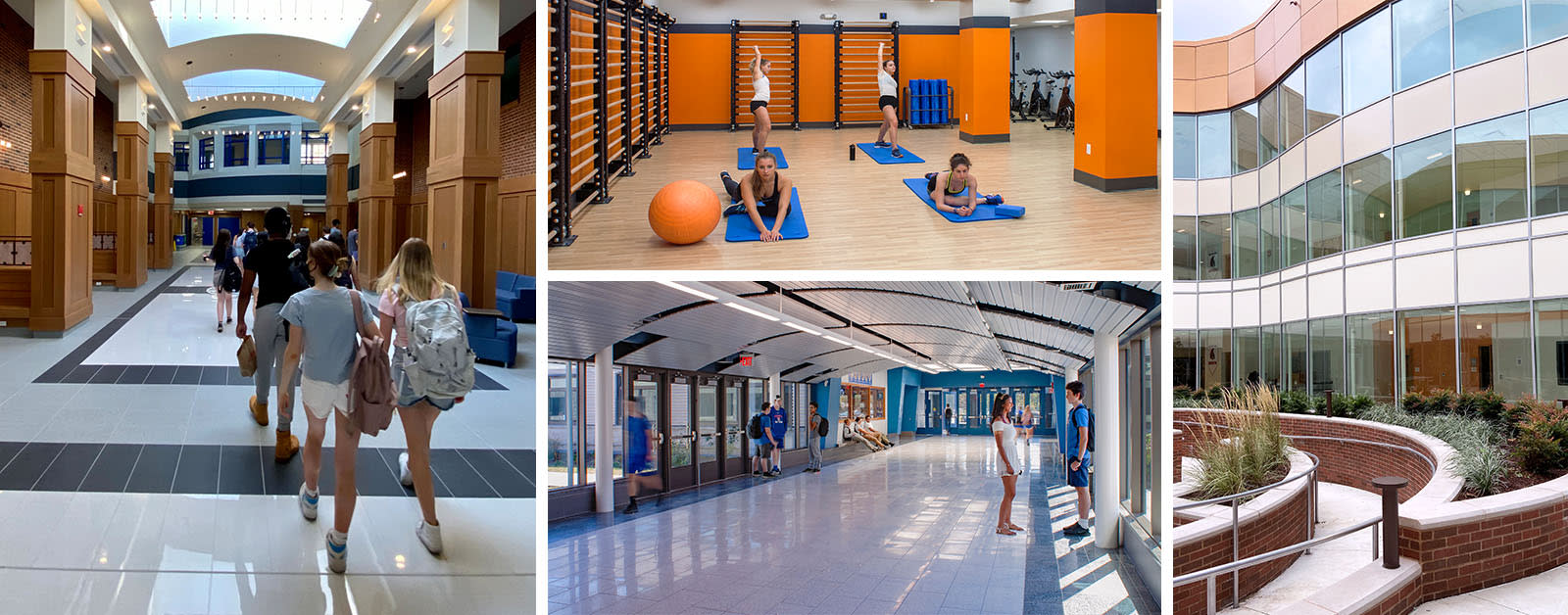
School Architecture and Wellness: 7 Steps to Improve Student Health

School Architecture and Wellness: 7 Steps to Improve Student Health
The COVID-19 pandemic has sparked public interest in reexamining the built environment with an eye towards wellness initiatives. This is especially true in schools, where COVID-19 precautions have changed the entire landscape. What is the relationship between school architecture and student wellness? Can the educational built environment influence student fitness, disposition, productivity, alertness, attention span, and energy levels? Below are seven tips from LAN Associates’ architects and engineers on how school design can improve student wellness:
1. Promote Physical Activity
Physical activity releases endorphins, the chemicals produced by the body to relieve stress and pain. By integrating engaging exercise opportunities like yoga studios, rope courses, spin rooms, and rock-climbing, schools can boost participation in athletics. School designs should also include active corridors and sensory paths and promote the use of stairs by making them an engaging central element.
2. A Connection to Nature
Adding access to the outdoors and integrating nature into schools help utilize the natural environment’s inherent calming effect. For ground up builds, consider incorporating a courtyard. Inside, think about biophilic elements, creating vistas toward exterior site amenities such as outdoor learning areas, and implementing natural finish materials and wall graphics.
3. Prioritize Natural Light
Increased exposure to natural light has shown to improve sleep quality, mood, cognitive performance, motivation to learn, and produce higher quality of life ratings. Promote the use of natural daylight by incorporating daylight harvesting strategies by locating break-out areas adjacent to large areas of glazing and optimizing the building’s solar orientation by controlling the intake of daylight through solar shades, light shelves, and translucent wall assemblies.
4. Make Support Services Accessible and Comfortable
School support services should be destigmatized, easily accessible, and comfortable, not tucked away in an administrative section of the building. Provide a well-lit and relaxing waiting area and have these services near learning resource centers or guidance suites.
5. Invest in Customizable and Personal Spaces
It’s important that children feel safe, secure, and relaxed at school. Allowing students to make spaces their own can make school a true home away from home. Flexible furniture, break-out spaces, and zoned learning areas can provide a sense of control and negate feelings of rigidity. For a sense of privacy and solitude, reading nooks, think pods, and sensory paths can provide a private enclave.
6. Be Mindful of Color Selection
The use of colors in a building can have a positive or negative impact on student mentality. Arousing hues such as red, orange, or yellow stimulate attentiveness, while passive hues such as green and blue may keep students calm. Colors can also serve functional purpose by providing wayfinding schemes within the building.
7. Ventilation and the Covid-19 Factor
Since the onset of COVID-19, LAN’s standard of HVAC design for projects include the most up-to-date recommendations from the CDC and ASHRAE: higher levels of filtration, air purification technology, and the ability to increase outside air when needed. None of these design recommendations are code required (yet) but have been proven to minimize the spread of viruses in buildings.
Additional Info
Source : https://lanassociates.com/industry-insights/school-architecture-and-wellness/






